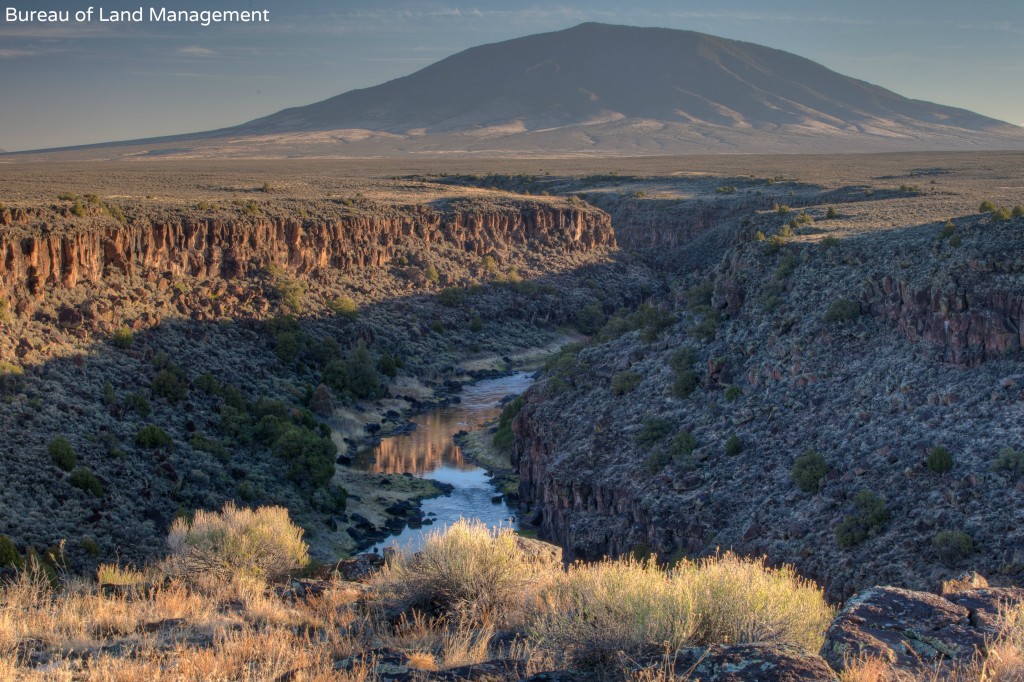Bill would protect special areas valued by ranchers and sportsmen within the Río Grande del Norte National Monument
Contact:
Susan Torres, [email protected], 908-331-1472
TAOS, NM (March 30, 2017) – A diverse coalition today applauded the mark-up of the Cerros del Norte Conservation Act (S. 432) in the U.S. Senate Committee on Energy and Natural Resources. The legislation can now move to a vote on the Senate floor.
The Act would provide extra protection for special areas contained within Río Grande del Norte National Monu¬ment by designating two new wilderness areas – Ute Mountain (Cerro del Yuta) and San Antonio Mountain (Rio San Antonio). Designated in 2013, Río Grande del Norte National Monu¬ment was supported by business owners, sportsmen, tribal leaders, local and federal elected officials, and grazing permittees. Senators Tom Udall and Martin Heinrich introduced the Cerros del Norte Conservation Act following the national monument designation to protect these special areas.
“My family has been grazing in northern New Mexico for hundreds of years, and we depend on places like the wilderness within the Río Grande del Norte National Monu¬ment for our livelihoods,” said Erminio Martinez, a grazing permittee. “By passing this bill, my children and grandchildren will be able to carry on our rich family traditions passed on to me by my father and grandfather.”
The proposed wilderness areas within the national monument serve as one of the world’s great avian migratory routes. It is also home to important game species like pronghorn and elk. The legislation would also safeguard world-class recreation opportunities already enjoyed within the national monument, such as hiking, hunting, and fishing. Grazing would continue in already-existing areas, and water rights would not be impacted.
Marty Torres of Laguna Elk Ranch said about the mark-up, “The elk on our ranch depend on the water that is safeguarded by the wildest places in the Río Grande del Norte National Monument. In addition to sustaining our family, we see hunters, fisherman, and other folks come to experience all that the national monument has to offer – including the proposed wilderness areas.”
Wilderness designation within the national monument will boost local businesses. One year after President Obama designated the Río Grande del Norte National Monument, there was a 40 percent increase in visitors and a 21 percent increase in the Town of Taos Lodgers’ Tax Revenue. Additionally, a recent EcoNorthwest study found that “quiet recreation” on Bureau of Land Management lands generated $173 million dollars and supported 1,712 jobs across the state.
“For over 200 years, my family has been ranching and farming in Northern New Mexico. Our cattle and crops depend need clean water, and wilderness designation will help preserve that precious, diminishing resource.” Added Floyd Archuleta, a rancher from El Prado.
In March, 2013, President Obama designated Rio Grande del Norte as a national monument. The two proposed wil¬derness areas in the Cerros del Norte Conservation Act will comprise 21,420 acres of the 242,500-acre national monument northwest of Taos, New Mexico.
“Wildlife is only as healthy as the lands and waters that it depends on,” said Ivan Valdez, co-owner of The Reel Life in Santa Fe. “These two wilderness designations will ensure that future generations of hunters and anglers will always have access to their birthright just as we do today. I want to thank Senators Martin Heinrich and Tom Udall for their steadfast leadership in safeguarding our natural heritage that belongs to all of us.”
###


